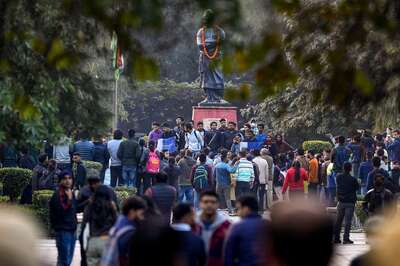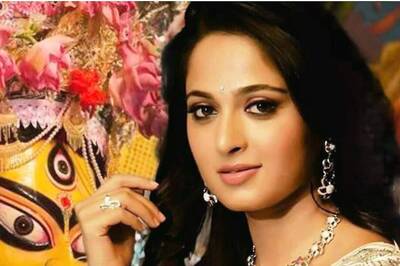
views
Lucknow: With voting done for 67 out of 80 seats in the most crucial state of Uttar Pradesh, speculation is ripe about the possible outcomes. This even while the concerned political players continue to battle hard for the remaining 13 seats in core eastern UP.
Political pundits and psephologists are hinting at possible numbers and emerging scenarios. But electoral realties in the battle for 2019 suggest that poll prediction is a horrendous task with respect to Uttar Pradesh, where BJP and the SP-BSP-RLD gathbandhan are entrenched in a tough contest.
For distant watchers of UP politics, electoral outcome may look to be simple arithmetic. With the two regional heavyweights of SP and BSP coming together and with added support of pre-dominantly Jat-based Party, the RLD, in Western UP, the most ideal and simple assumption should be that of the solidarity of the Backward and Dalit castes that is the OBC’s and SC’s. This along with an undisputed support from the strong Muslim population should be enough to stop the BJP juggernaut.
But like it or not, this analysis doesn’t describe the realities of the state. In fact, it’s several conflicting factors that are defining the elections this time around. Some working in BJP’s favour, others to Gathbandhan’s advantage.
The electoral outcome will depend upon which side played its cards well and was able to counter the opposing factors. At the moment, the elections have been like a war between two armies with different set of skills and strength but more or less equally matched.
The obvious question, therefore, is why the alliance despite the presumed strength had actually not worked to its maximum potential. Or has it actually worked, but it is not apparently visible because of BJP’s ability to manage perception.
It will be interesting to look at these factors and counter factors which make prediction so difficult for electoral outcome in UP.
NO MODI WAVE, BUT A CURRENT
While in 2014, it was a strong Modi wave that diluted caste boundaries and gave a landslide victory to BJP and allies with 41 per cent vote share, this time around there is no wave but a “Modi current” is still on the ground.
The wave might have subsided to a current, but it seems to be still resonating with people on the ground. The election has concentrated to “For Modi or against Modi” phenomenon. This is even evident across rural belts. Can it impact the voting behaviour among the most crucial OBCs and Dalits?
PRESIDENTIAL-STYLE CAMPAIGN
The BJP and RSS were able to build a presidential sort of campaign narrative in a parliamentary election. Votes were not sought in name of the BJP or the candidates but only and only in the name of Modi.
“Phir ek bar Modi Sarkar” was the only campaign line as the BJP projected him as the tallest leader and played on the TINA (There is No Alternative) factor to woo the voters.
This discourse and desire for a ‘strong leader’ have also helped overshadow the more pressing concerns in the state like rising unemployment, agrarian crises and stray cattle menace.
CASTE ARITHMETIC VS COUNTER POLARISATION
A big factor that will decide who emerges the winner is if the BJP managed a counter-polarisation of non-Yadav OBCs and non-Jatav/chamar SC. And if it has, then to what extent.
For most of the political watchers, this election is primarily about the castes and not about the larger communal polarisation. While the SP-BSP-RLD alliance’s core voting constituency has emerged to be that of Yadav and Jat OBCs, Chamar Dalits and Muslims, for BJP it is primarily the upper caste Hindus plus certain segments of the higher OBCs.
Beyond this is a huge population of Most Backward Castes, multiple sub-castes among the Dalits which for an academic observation can be termed as the “Middle Ground” castes.
These “middle ground castes” form a strong voting bloc, especially in regions of central UP and to east of it, extending up to the Bihar border. BJP had tried hard to strongly influence and keep these castes in its fold.
This is the reason why unlike the West UP where there were attempts of a subtle communal polarisation through debates of “Ali vs Bajrangbali” and a slight jingoistic appeal for Hindu nationalism through exaggerated claims about national security and Pakistan bashing, the campaign narrative has been more around caste appeal as the election moved towards east UP.
It’s for this reason that Prime Minister Modi on multiple occasions reminded of his “most backward caste” credentials and also tried to converge caste dynamics through common agenda of poverty.
Similarly, gathbandhan leaders Mayawati and Akhilesh Yadav too have been desperately trying to win over these non-Yadav and non-Jatav OBCs and Dalits by hitting out at the PM as a “fake OBC”.
SP-BSP ALLIANCE’S VOTE TRANSFER
While the BJP has pinned all hopes on Modi, the SP-BSP alliance has been able to breach barriers to have a strong hold on the ground. General observation is that the alliance has been able win back the lost sections of its core Yadav and Jatav support base, which they lost to BJP in 2014 and then in 2017 assembly polls.
This alone makes it a force to reckon with. Yadav-Jatav-Muslim formula alone is sufficient to decide the electoral outcome on several seats, especially in West and parts of central UP.
CHALLENGE OF MIDDLE GROUND CASTES
But despite its numerical strength, the alliance has failed to bring forth a “policy alternative” to the Modi-led BJP government. The sole reliance has been on caste arithmetic. This poses a major challenge.
In absence of a strong alternate economic agenda, the alliance may just not be able to tap into rising discontent. Had it done so, it would have been much easier to forge a larger consolidation of various castes and sub-castes under the OBC and SC bracket.
The question that arises then is whether the alliance failed to override internal identity aspirations of various deprived castes by not attempting to forge a larger class bonhomie through economic agenda. This now gives the BJP a strong hope of counter polarisation against what it defines as “Yadav-Jatav” hegemony.
THE CONGRESS FACTOR
It’s a factor which was equally baffling for both the alliance as well as the BJP. Though Congress general secretary Priyanka Gandhi claimed that her candidates if not winning will actually cut into BJP’s vote bank, the reality is it can also hurt the alliance prospects on certain seats.
Mayawati and Akhilesh’s original calculations of Congress as a third player, eating into BJP’s core upper caste vote bank, got disturbed when the Congress decided to go full throttle in UP by launching Priyanka in politics. The strong Congress phenomenon is now a double whammy for both the BJP and the alliance.
SILENT VOTERS
Touring across the State, one is surprised by the silence of voters this time around. While BJP has also kept a low decibel campaign, absence of vocal supporters is a striking phenomenon this time around. The silence is most glaring among the non-core constituents of the warring sides.
There are two narrations at the same time-someone who is talking about failure of the Modi government in keeping up to its 2014 poll promises, also surprises you by suggesting that probably Modi is the tallest of all leaders at the moment. One can say it is out of BJP’s propaganda machinery but then the matter of fact is to an extent they had been successful in building this narration.
CONCLUSION
Amidst these arguments and counter arguments an analysis of 2014 poll results indicates that a slight swing in percentage of attained votes can tilt the scales either way. Even IF BJP is able to hold to its 42% vote share of 2014, now in face of a SP-BSP alliance, it will lose around 36 seats this time around.
If BJP loses 5% votes as compared to 2014 then its projected seats will be around 25 and alliance will go beyond 50 seats. In a scenario of 7% vote loss for the BJP it can lose as many as 50 seats as compared to 2014.
But in a society with such heterogeneity and competing identities and aspirations, politics is not always governed by arithmetic.
So will pure arithmetic be impacted upon by several conflicting and equally strong factors is need to be seen. It’s because of these factors and ground realities that till date there is no definitive answer to UP’s electoral outcome. Predicting numbers is therefore a risky business.




















Comments
0 comment